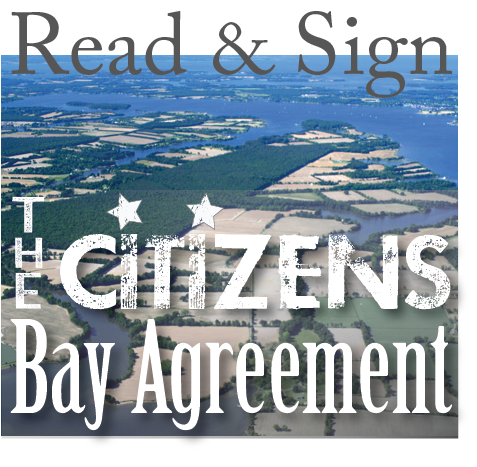Chesapeake Bay Action Plan
After decades of effort, the voluntary, collaborative approach to restoring the health and vitality of the Chesapeake Bay— the largest estuary in the United States—has not worked and, in fact, is failing.
A diverse group of 57 senior scientists and policymakers have joined forces to save the Bay. This is our plan.
GERALD WINEGRAD: THERE’S STILL HOPE TO REVERSE THE CHESAPEAKE’S OYSTER COLLAPSE | COMMENTARY
There is no greater tragedy in the decline of the Chesapeake Bay than the collapse of the oyster population. The failure to heed warnings going back more than a century led to a blatant disregard for the science, with oysters now at 3% of late 19th-century levels. This despite the expenditure of more than $500…
The Chesapeake Bay deteriorates into a quagmire full of broken promises
By GERALD WINEGRAD After 40 years and $10 billion spent to restore the Chesapeake Bay’s polluted waters to meet basic Clean Water Act requirements, the U.S. Environmental Protection Agency and bay states have failed to do so. EPA data document that 71.9% of Chesapeake’s tidal waters remain impaired (polluted) — an improvement of just 1.6% since…
Gerald Winegrad: Reflections on wildlife conservation after African safari |
By GERALD WINEGRAD Carol and I recently returned from a 20-day expedition to explore the wonders of the natural world in Tanzania and Kenya. She captured wildlife with her camera and I with my binoculars. We will be sharing the spectacular array of animals we saw and the awesome panoramic landscapes in a presentation at Quiet…
Gerald Winegrad: The sad state of the Chesapeake Bay and advocacy for its restoration
The main failure is not adequately controlling agricultural nutrients and sediment that are choking the bay system. Farmland covers two million acres of Maryland, 32% of its land mass. Farming is a leaky business, especially from the massive chicken industry growing about 600 million birds a year producing 1.6 million pounds of chicken litter, mostly poop.
A death warrant for the Chesapeake Bay?
Opinion by GERALD WINEGRAD
Saturday marks the 40th anniversary of the signing of the first Chesapeake Bay Agreement. As a Maryland state senator at the time, I witnessed this event along with 700 other hopeful activists. Our optimism for a clean bay is being crushed as the harsh reality sinks in: The Environmental Protection Agency is badly failing in its duty to enforce the Clean Water Act and to prod bay states to meet mandatory pollution reductions to restore the Chesapeake. This is despite the states being given 15 years to comply.
My prescription for restoring Chesapeake Bay demands strong medicine!
This might be a Hail Mary pass, but it is time for policy makers to end the greenwashing and half-measures and adopt these proposals. Bay Restoration Prescription. The price of not doing so is a degraded Chesapeake with lurking flesh-eating diseases and dying fisheries…
EPA and bay state governors again do nothing to advance the cause of a clean Chesapeake Bay
These top scientists found that reductions in key bay pollutants of nitrogen, phosphorus and sediment were likely overestimated from BMPs for agriculture and developed lands. The BMPs were not as effective as thought. “While Chesapeake Bay Program modeling suggests that phosphorus reductions targeted by the TMDL are nearly achieved, analysis of water quality at riverine monitoring stations finds limited evidence of observable reductions in P concentrations.”
Efforts to restore the Chesapeake Bay are a study in cowardice and political expediency
There is more very bad news for all of us in Chesapeake Country: the bay watershed lost 20,000 acres of forest a year (2013-2018). Maryland led the way. A new study also shows that developed impervious areas in the watershed increased by 50,651 acres from 2013 to 2018. This is mostly from new structures, roads, driveways, parking lots and runways.
We are senior Chesapeake Bay scientists and policymakers from Maryland, Virginia and Pennsylvania who have concluded that after decades of effort, the voluntary, collaborative approach to restoring the health and vitality of the largest estuary in the United States has not worked and, in fact, is failing. Our group unanimously recommends that all states draining into the Chesapeake Bay adopt our 25 action items in their Watershed Implementation Plans (WIP) and implement them to improve the Bay’s water quality and to meet the requirements of the Clean Water Act.
Sign up for news & updates from Patuxent Riverkeeper
